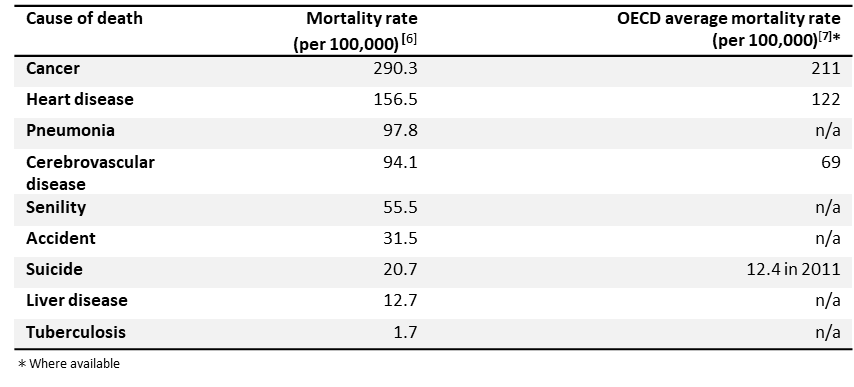Japan is an island nation in eastern Asia with an area of 377,887 square kilometers that is comprised of over 6,800 islands, including Honshu, Hokkaido, Kyushu, Shikoku, and Okinawa. Japan contains 47 self-governing administrative divisions referred to as prefectures.
The total population hovers around 127 million people, with about 90% living in urban areas. As of 2015, about 36.5% of the total population resided in Tokyo, Kanagawa Prefecture, Osaka, Aichi Prefecture, or Saitama Prefecture. Among these, the largest proportion was in Tokyo, which was home to 10.7% of the total population of Japan.[1]


